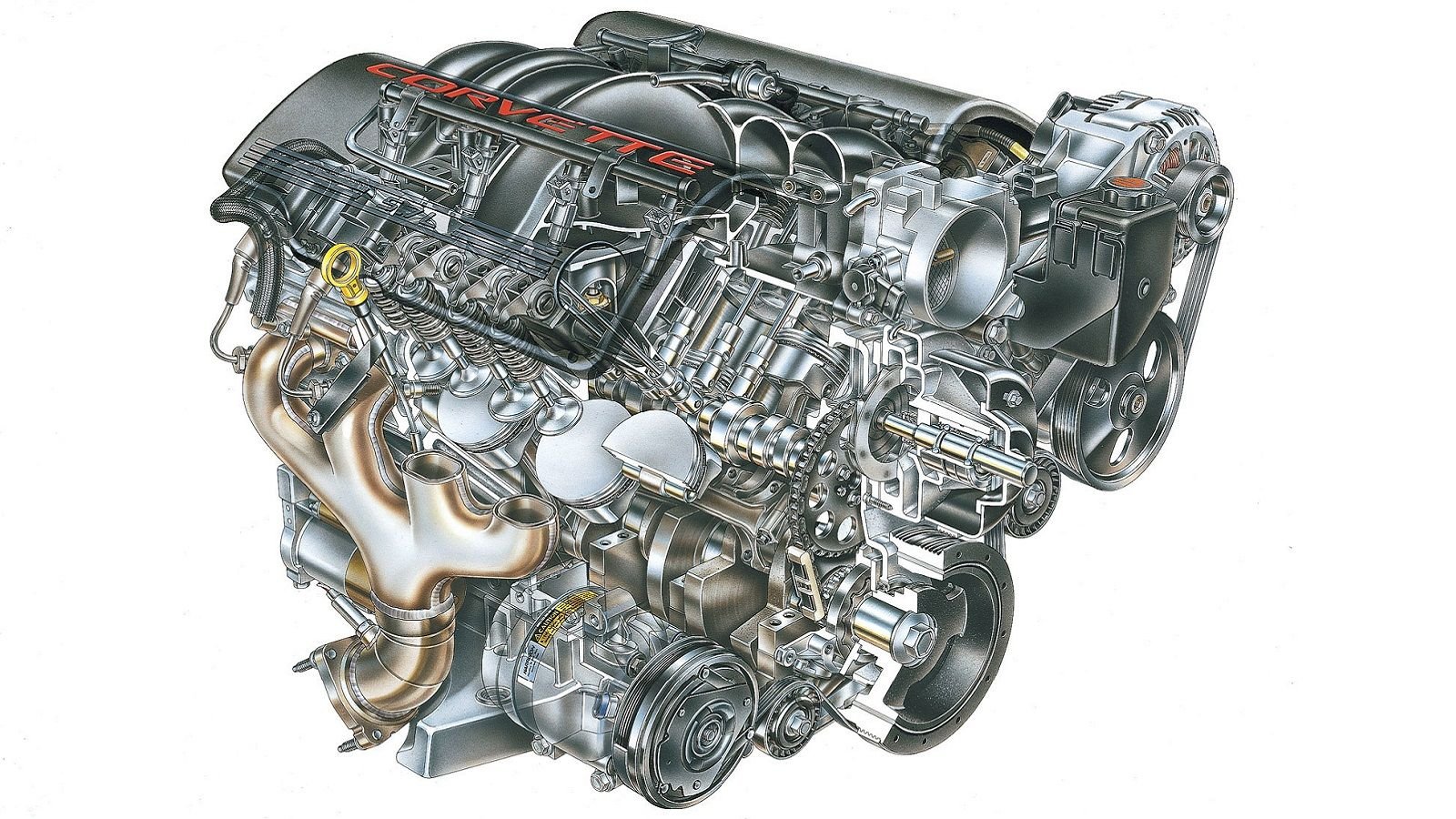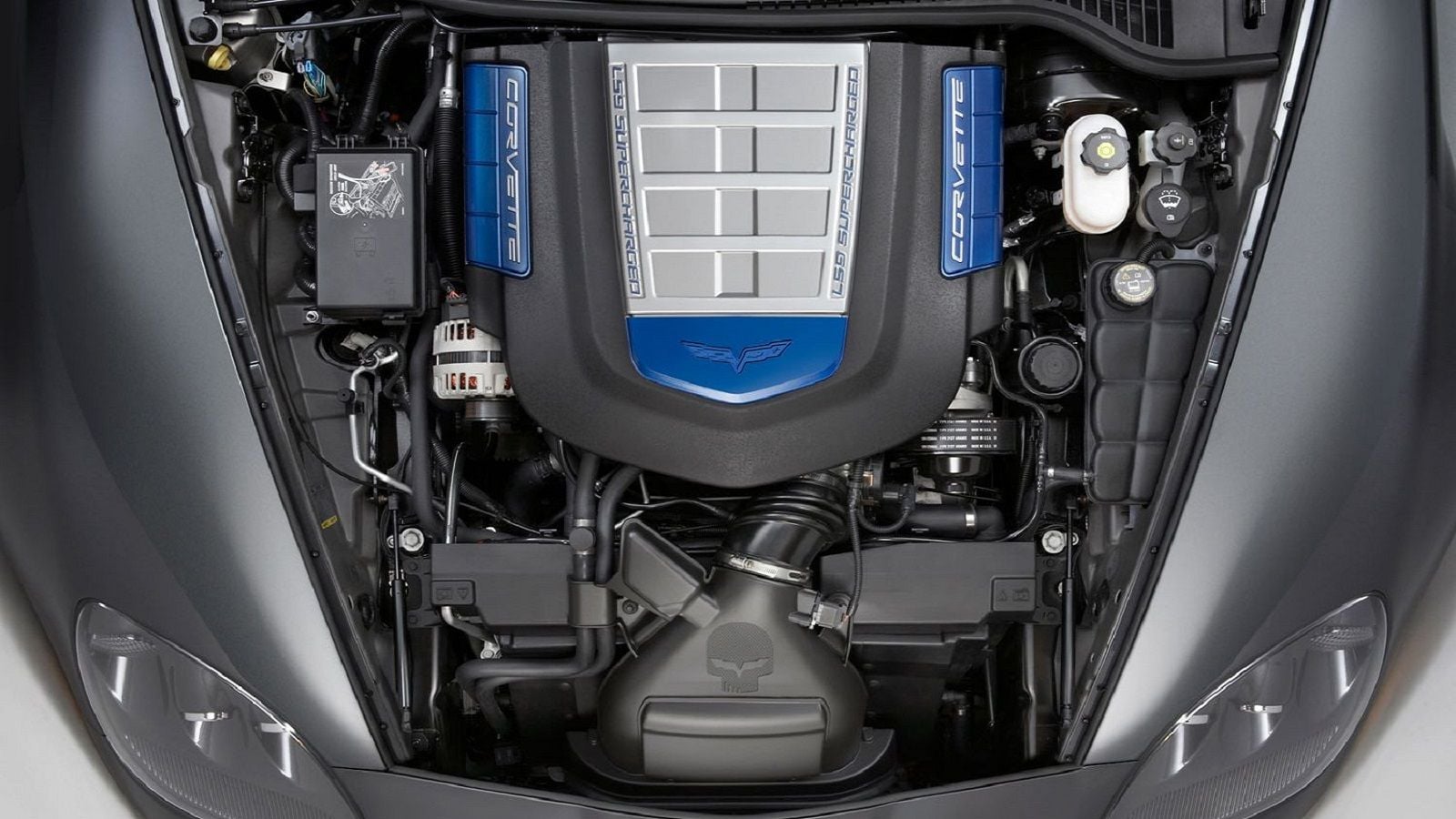History of the LS motors (Photos)
Despite being an all-new design, GM engineers used much of what they learned from their first and second generation small block V8 engines to create the legendary LS platform. LS engines have taken on the world and proven to be one of the most potent yet reliable powerplants for performance vehicles. Although some may have questioned the radical shift to a production aluminum block back in 1997, we can look back after a decade of success with the LS engine family and agree that it was a move in the right direction.












1. LS1 - 1997
The LS1 engine burst onto the scene as the featured powerplant of the then all-new C5 Corvette in 1997. The LS1 was the third generation (Gen III) small block V8 that replaced the outgoing and short-lived Gen II LT engines as found in the C4 Corvette and the fourth generation Camaro/Firebird. The displacement for the all aluminum LS1 was 5.7L (346 c.i.) and produced up to 350 horsepower and 365-pound feet of torque in its highest spec configuration. The LS1 was used in vehicles from 1997 to 2004 including Corvettes and GM F-body cars, as well as several cars sold in foreign markets.
>>Join the conversation about the History of the LS Motors right here in the LS1 Tech Forum!
2. LS6 - 2001
The Gen III V8 also saw a high-output version of the LS1 known as the LS6. Like the LS1 block, the LS6 has six-bolt main bearing caps, utilizes a central thrust bearing, has the same block dimension (4.40" bore centers and 9.24" deck-height), and uses a distributor less ignition system; however, the LS6 does have improved holes cast into the block for better bay-to-bay breathing at high rpm and reinforced main webbing for additional strength. In addition to the block, the LS6 also had a refined intake manifold, heads, and camshaft package to better performance to 405 horsepower and 400 pound-feet of torque. The LS6 engine was found in the 2001-2004 C5 Corvette Z06 as well as the 2004-2005 Cadillac CTS-V.
>>Join the conversation about the History of the LS Motors right here in the LS1 Tech Forum!
3. LS2 - 2005
Further evolution of the LS platform continued, and in 2005 the Gen IV LS2 debuted in the C6 Corvette and was also the standard engine in the 2005-2006 Pontiac GTO. While there may not have been a huge leap in component design between the Gen III and Gen IV engines, the Gen IV V8 had provisions for cylinder deactivation and larger displacements, with the latter being implemented on the LS2 at a larger 6.0L displacement compared to the traditional 5.7L found on small blocks. With slightly higher compression and an additional 18 cubic inches on hand, the LS2 produced 400 horsepower and 400 pound-feet of torque, albeit throughout much larger rpm range than the outgoing LS6. Something to note on the Gen IV engines is that the knock sensors were moved from the top of the engine to the front timing cover along with the cam sensor, which subsequently requires different wiring.
>>Join the conversation about the History of the LS Motors right here in the LS1 Tech Forum!
4. LS7 - 2006
The LS7 was the largest LS engine placed into a production car (C6 Corvette Z06 & 2014-2015 Camaro Z/28) at 7.0L (427c.i) and features incredible technology and components to achieve maximum performance. The LS7 block is very much a production version of the Corvette C5R racing engine with its pressed-in Siamese cylinder liners to accommodate the larger bore and stroke (4.125" X 4.00"), forged steel main bearing caps, titanium connecting rods and intake valves, and hyper eutectic pistons. These hand-built precision engines are good for a lively 505 horsepower and 470 pound-feet of torque with a redline of 7100 rpm.
>>Join the conversation about the History of the LS Motors right here in the LS1 Tech Forum!
5. LS3/L99 - 2008/2010
The LS3 engine as introduced for the 2008 C6 Corvette was an updated version of the LS2 engine said to have a strengthened block casting process to allow for the larger 4.06" bore to achieve 6.2 liters (376 c.i.). The biggest improvement comes from the newly sourced rectangle-port heads that, when coupled with a more aggressive camshaft, redesigned offset rocker arms, and high-flow intake manifold and LS7 fuel-injectors, produced 430 horsepower despite its lowered 6,000 rpm redline. The L99 as found in the 2010 Camaro is based on the LS3 but includes variable valve timing and active fuel management to deactivate half of the cylinders in cruising conditions to reduce fuel consumption and emissions.
>>Join the conversation about the History of the LS Motors right here in the LS1 Tech Forum!
6. LS9/LSA - 2009
The highest output production LS engine comes by way of the supercharged LS9, which was the powerplant of choice for the top-tier 2009 Corvette ZR1. Many would think the race-bred LS7 engine would be used as a basis for the LS9, but it was, in fact, the LS3 that was chosen because of its reinforced cylinder walls capable of supporting the forced-induction setup. The compression ratio was lowered to 9.0:1 and the cylinder heat bolts were enlarged to 12mm to allow the 2.3L, four-lobe Eaton supercharger to boost horsepower to 638 ponies. The engine was also equipped with oil squirters to cool the underside of the pistons to reduce the chances of detonation. The LSA variant as used in the 2009-2014 Cadillac CTS-V was nearly identical except for cast pistons and a slightly smaller 1.9L supercharger.
>>Join the conversation about the History of the LS Motors right here in the LS1 Tech Forum!
For help with service and maintenance of your car, check out the how to section of LS1Tech.com
